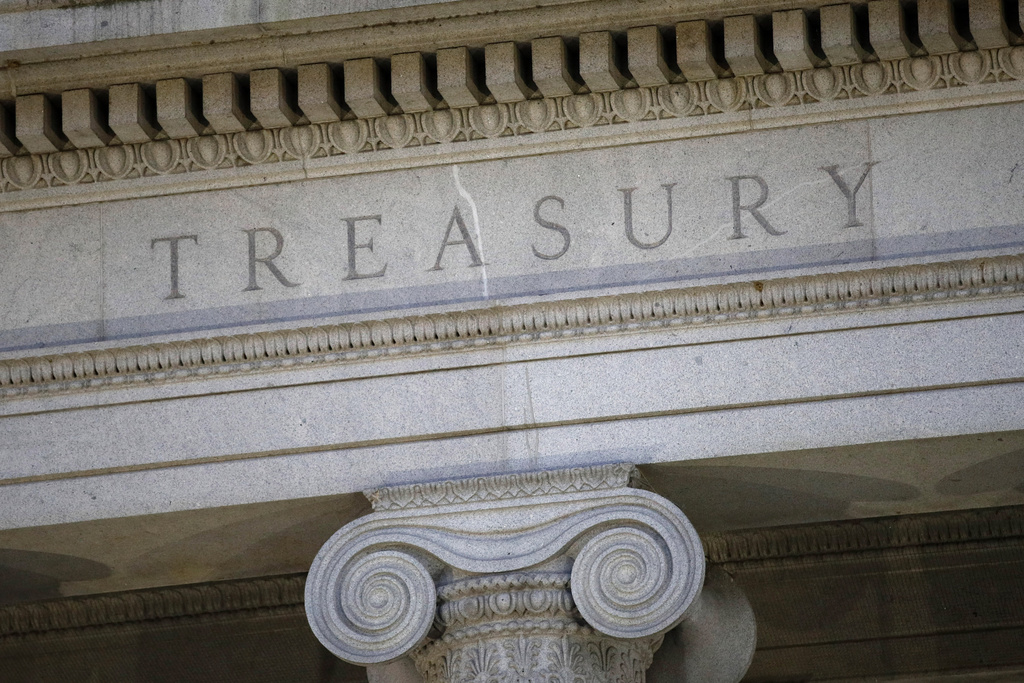Congress has passed the country’s first major law regulating stablecoins, a type of cryptocurrency designed to maintain a steady value, bringing attention to digital finance at the national level. State officials and banking leaders say the measure validates Nebraska’s early moves to establish rules of its own, while raising questions about how the law will affect banks, consumers and the broader economy.
The GENIUS Act, short for Guiding and Establishing National Innovation for U.S. Stablecoin, cleared the House in a bipartisan 308-122 vote last month and was signed into law by President Donald Trump on July 18. The Senate had already approved the legislation, which supporters call a watershed moment for crypto and the U.S. dollar.
“Stablecoins will support the advancement of the U.S. dollar around the globe,” Rep. Mike Flood said on the House floor. “If we allow other countries to fill the void before the United States is able to put together a robust stablecoin regime, we will regret it when transactions are done with currencies from geopolitical adversaries like China.”
What the law does
The GENIUS Act is the first U.S. federal law focused exclusively on payment stablecoins. Before its passage, stablecoins existed in a legal gray zone, heavily used but largely unregulated at the federal level. Lawmakers expressed concerns about systemic risks, lack of consumer protections and foreign-issued stablecoins challenging the dollar.
The act sets strict requirements: Every stablecoin must be backed 1:1 with cash or short-term U.S. Treasuries, issuers must undergo monthly third-party audits and publicly disclose their reserves and large tech firms and commercial banks must create separate subsidiaries to issue stablecoins. Civil penalties can reach $100,000 per day for violations.
Unlike speculative cryptocurrencies such as Bitcoin or Ethereum, stablecoins are designed for payments only, not savings or investment. Offering interest is prohibited. The goal, according to the White House, is to make stablecoins “trustworthy, redeemable and fully regulated.”
Politics and lobbying also played a significant role. The crypto sector spent more than $100 million on congressional races last year, building what was described as a growing “war chest.” Coinbase CEO Brian Armstrong called the GENIUS Act “a financial revolution.” The law has also raised concerns that its rules may not go far enough, potentially allowing nonbank issuers to enter financial markets without meeting the same standards as banks.
Nebraska’s head start
Nebraska is uniquely positioned for this moment. In 2021, the state passed the Financial Innovation Act, which created a legal pathway for banks to hold digital assets and established a new charter for Digital Asset Depository Institutions (DADIs). That made Nebraska only the second state, after Wyoming, to attempt a comprehensive framework for digital assets.
“Nebraska really had the vision relative to the desirability of a payment stablecoin, and with that, they created the Nebraska Financial Innovation Act in 2021,” said Kelly Lammers, director of the Nebraska Department of Banking and Finance.
U.S. Rep. Mike Flood, who authored that legislation while in the Nebraska Legislature, has since become one of the most vocal advocates for a strong federal framework. In Washington, he pushed for a “state pathway” in the GENIUS Act to ensure Nebraska-chartered institutions can participate in the stablecoin market.
“Passage of a stablecoin bill is critical for both innovation in this country and to preserve and protect dollar dominance across the globe,” Flood said. He has also framed the issue as a matter of geopolitics, warning that adversaries like China could seize ground if the United States hesitates.
The GENIUS Act does not wipe away state-level rules, but instead overlays a national framework. That means Nebraska’s system remains intact, while now being harmonized with federal standards. Lammers said this alignment shows Nebraska was “on the right path.”
One of the most closely watched developments is Telcoin, a Nebraska-based fintech that received an order of approval to form a Telcoin Digital Asset Bank. If it applies for and secures a charter, it could become the first company in the state authorized to issue stablecoins.
The timeline is still long. Federal regulators have up to 18 months to finalize detailed rules, though Lammers expects guidance within the next year. Until then, Nebraska banks and credit unions are in research mode.
Bankers weigh in
Nebraska’s banking industry views stablecoins with cautious optimism. Richard Baier, president and CEO of the Nebraska Bankers Association, said he sees parallels with earlier shifts in financial technology.
“Nebraska banks are really good at embracing technology. Stablecoin is one more change in that process,” Baier said. “From checks to ATMs, to online bill pay, the industry has always adapted to meet customer needs.”
He praised the GENIUS Act for establishing “guardrails” that help prevent fraud and misuse, while ensuring banks and nonbanks operate under the same set of rules. He likened the law to “building a new road” that still requires adjustments as banks and regulators navigate how stablecoins will work in practice.
Baier acknowledged that stablecoin use in Nebraska is limited today. Most interest has come from younger consumers experimenting with Bitcoin or Ethereum. “I suspect a lot of Nebraskans have lost money at some point, but you never hear anyone admit it,” he said.
Looking forward, he identified cross-border payments as the “low-hanging fruit,” especially for Nebraska companies that export grain, livestock or manufactured goods. Stablecoins could also streamline interbank settlements if one or two reliable issuers gain widespread adoption.
Baier stressed, however, that consumer protection is paramount. Digital assets have been linked to ransomware demands and illicit finance, and banks want to avoid exposing customers to unnecessary risks. “Stablecoins may just be one more tool in the tool belt,” he said.
What it means for consumers
For Nebraskans, stablecoins may soon appear as another payment option alongside checks, debit cards and digital wallets. But regulators caution that they should not be confused with traditional deposits.
“It is not FDIC insured, and it also does not earn interest,” Lammers said. “So it is a very short-term store of value to maybe help someone make a purchase.”
He explained that stablecoins function more like debit cards than checks: funds are verified instantly rather than after the fact. That could make them appealing for high-value transactions where sellers want immediate confirmation of payment.
Lammers pointed to examples as varied as an artist selling a painting, a farmer delivering a semi load of hay bales, or a parent-teacher organization holding a fundraiser. In each case, stablecoins could provide a faster, more secure way to transfer value directly between parties.
Still, Lammers stressed the importance of financial literacy. Consumers will need guidance to understand when stablecoins make sense and when they don’t. “It’s about explaining what your options are,” he said. “At one time, you chose paper or plastic. Now we’re asking: ‘When does a stablecoin fit, and when do you stick with what you already have?’”
The economic trade-offs
While Nebraska officials and bankers highlight opportunity, economists are weighing the broader consequences.
A recent bulletin from the Federal Reserve Bank of Kansas City examined how the GENIUS Act could reshape U.S. financial markets. The report noted that while the stablecoin market is relatively small at about $250 billion, it could expand rapidly with projections ranging from $500 billion by 2028 to $4 trillion by 2035.
Because the law requires stablecoins to be backed by treasuries or cash, growth could boost demand for U.S. government debt. But there is a trade-off — money moving into stablecoins often comes out of bank deposits. That reduces banks’ ability to lend.
The Fed estimated that for every $1 shifted into stablecoins, bank lending could decline by about 50 cents. If the market grows to $900 billion, that could mean a $325 billion reduction in bank loans, roughly 1 percent of total U.S. lending.
The ripple effects could be significant, particularly in communities that rely on access to affordable credit. Stablecoins may strengthen the dollar’s global role but could simultaneously squeeze domestic lending capacity.
Looking ahead
The GENIUS Act is only the beginning of federal crypto regulation. Lawmakers are already debating the CLARITY Act, which would set broader rules for digital assets, and the Anti-CBDC Surveillance State Act, which would bar the Federal Reserve from creating its own central bank digital currency. Both could reshape the landscape further if passed.
For Nebraska, the immediate task is preparing banks, credit unions and consumers for what comes next. Regulators are refining rules, bankers are evaluating opportunities and companies like Telcoin are positioning themselves to be early adopters.
Whether stablecoins become a common tool in Nebraska households and businesses will depend on consumer trust, regulatory clarity and industry adoption. But with its early legislation and congressional leadership, the Cornhusker State is likely to remain central to the national conversation.





Leave a Reply